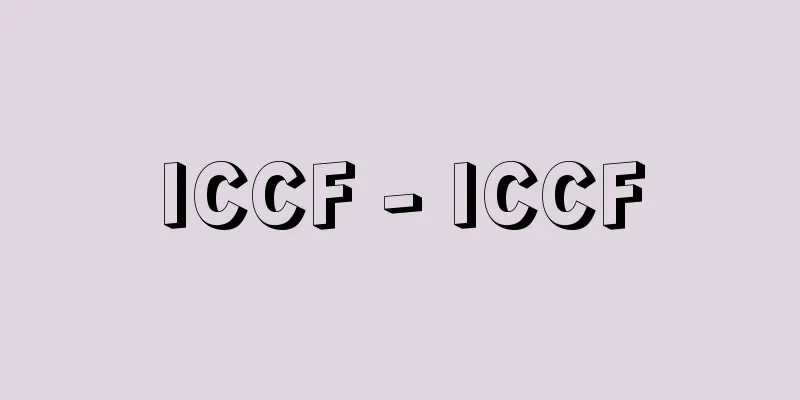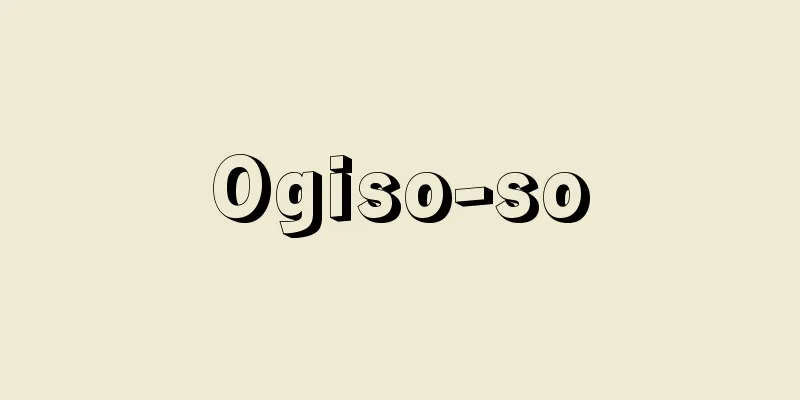Constructivism (English spelling)

|
One of the avant-garde trends in painting, sculpture, photography, design, and architecture in the 20th century. The term Constructivism was used in Russia from early 1921, and it meant the process and method of constructing industrial, practical objects, almost synonymous with design. In the utopian atmosphere following the 1917 revolution, a series of movements aimed at creating a new artistic environment that embodied the new social order of communism, known as Russian Constructivism, were born. Thus, while constructivism in the narrow sense refers to Russian Constructivism, it is also used to refer to a broader international trend that developed mainly in Germany from 1922 to the end of the 1920s, and more generally to abstract art in general, such as De Stijl, which is "constructed" from geometric forms such as lines and surfaces, so the meaning of the term is not consistent. Speaking specifically of Russia, constructivist activities began when Alexei Gan, Alexander Rodchenko, Barbara Stepanova, and the Stenberg brothers, members of INHUK (Institute of Art and Culture), which was established in Moscow in 1920 by the revolutionary government, formed the "Constructivist Working Group" in March 1921. According to the April 1921 program, constructivism no longer recognized the autonomous function of art (the "death of painting"), and called for the creation of a visual environment suited to the needs and values of the new socialist society. To that extent, Russian Constructivism in the strict sense does not include Malevich's Suprematism, which, although it was also a Russian avant-garde movement, aimed at non-utilitarian pure art. In fact, Constructivists tried to follow three principles in order to achieve a "communist expression of material structure": "tectonika" (the politically and socially appropriate functional use of industrial materials), "construtia" (the process of organizing industrial materials), and "factura" (the selection and appropriate treatment of materials). The emphasis on industry here implies the belief that industrial development promised political and social progress in post-revolutionary Russia, and the machines that supported this industrial development were therefore nothing less than a metaphor for a new culture and a practical means of economic reconstruction. This is why Constructivist endeavors were directly inspired by Tatlin's model of the Monument to the Third International (exhibited in Petrograd (St. Petersburg) in November 1920 and in Moscow in December). Made of huge iron beams and glass, Tatlin's monument was "a model for producing discoveries that would help create a new world" (Tatlin), and while demonstrating the power of mechanical beauty, it symbolized the ultimate goal of the revolution. Constructivism's aim to create a visual environment that would respond to the new socialist society was manifested, for example, in the theater. The designs for Meyerhold's stage by Lyubov Popova and Stepanova are typical examples. Ergonomic "one-piece" clothing replaced traditional costumes. The display for the "Workers' Club" that Rodchenko installed in the Soviet Pavilion at the International Exhibition of Decorative Arts in Paris in 1925 clearly illustrates the constructivist approach of presenting a vision directly linked to the new society. With the harsh living conditions in his homeland in mind, Rodchenko designed furniture using wood, which was abundant and inexpensive in Russia, and practiced rationalization and standardization. Thus, although Constructivism aimed at industrial design, its avant-garde designs were not easily put to practical use in a society exhausted by revolution and civil war. For this reason, the focus of Constructivist work shifted to graphic design and photography. Rodchenko designed the layouts and covers of avant-garde magazines such as Kino Photo (1922), Lev (1923-25), and Novi Lev (1927-28), as well as movie posters. These were photomontages that combined bold typography, abstract design, and photography. In fact, photography, which is produced through a mechanical process, was a suitable medium for Constructivism, which believed in technology, and also matched the Communist Party's policy of valuing realistic and clear images that were easy for the masses to understand. Incidentally, Rodchenko consistently used photography as his main medium of expression until the 1950s, and produced many excellent works. After Lenin's death, Stalin seized power and implemented the First Five-Year Plan in 1928, expelling opponents, and then turning his attacks on the avant-garde. With the sole exception of photomontage, which survived as an effective weapon of propaganda during the Cultural Revolution from 1928 to 1932, the activities of Constructivism that accompanied the revolution were eventually crushed by the actual political system. However, the many refreshing experiments left behind by Constructivism continue to be a stimulating source of inspiration today. [Hiroshi Murata] [References] | |Source: Shogakukan Encyclopedia Nipponica About Encyclopedia Nipponica Information | Legend |
|
20世紀の絵画、彫刻、写真、デザイン、建築における前衛的傾向の一つ。構成主義の語は、1921年の初めからロシアで用いられたが、その意味するところは、工業的な実用物を構成していくプロセス、方法という、ほとんどデザインと同義のことばであった。17年の革命に続くユートピア的雰囲気のなかで、共産主義という新たな社会秩序を体現する、新しい芸術的環境を生みだそうとする一連の動き、いわゆるロシア構成主義が誕生したのである。 このように構成主義は、狭義にはロシア構成主義を意味するものであるが、他方、1922年から20年代の末にかけて、主としてドイツで進展したより広範な国際的な潮流をさすことばとして用いられ、さらに一般的には、線や面といった幾何学的な形態によって「構成される」デ・ステイルにみられるような抽象美術全般をさす場合もあり、その語義は一定ではない。 ロシアに限っていえば、1920年に革命政府によってモスクワに設立された「インフークИНХУК/INHUK(芸術文化研究所)」のメンバー、アレクセイ・ガン、アレクサンドル・ロドチェンコ、バルバーラ・ステパーノワ、ステンベルグ兄弟らが、21年3月に「構成主義の作業グループ」を結成し、構成主義の活動が開始される。21年4月のプログラムによれば、構成主義は、もはや芸術の自律的な機能というものを認めず(「絵画の死」)、あらたな社会主義社会の必要と価値にふさわしい視覚的環境の創造を訴えるのである。 その限りで、厳密な意味でのロシア構成主義は、同じロシアの前衛ではありながら、非実用的な純粋美術を目ざしたマレービチのシュプレマティズムを含むものではない。実際、構成主義者たちは、「物質的な構造の共産主義的な表現」を獲得するために、三つの原理に従おうとする。「テクトニカ」(政治的社会的に適切な工業的素材の機能的な使用)、「コンストルチア」(工業的素材を組織するプロセス)、「ファクトゥーラ」(素材の選択と適切な処理)である。 ここで強調される工業が含意するものは、革命後のロシアにあって、工業的発展こそが政治的、社会的な進歩を約束するものであるという信念であり、こうした工業的発展を支える機械は、したがって新しい文化のメタファー(象徴)にして経済の再建の実際的手段にほかならなかった。構成主義の試みが、直接的にはタトリンの「第三インターナショナル記念塔」のモデル(1920年11月ペトログラード(サンクト・ペテルブルグ)、12月モスクワで展示)から啓示を受けている理由はここにある。タトリンの記念塔は、巨大な鉄の梁(はり)とガラスで作られた「新世界の創造に役立つ発見を生み出すモデル」(タトリン)として、機械美の力を誇示しつつ、革命の最終目標を象徴していたからである。 構成主義の目ざした新たな社会主義社会に即応する視覚的環境は、たとえば、演劇という場にその発現をみていた。リューボーフィ・ポポーワやステパーノワが手がけたメイエルホリドの舞台のためのデザインはその典型である。伝統的な衣装に代わって、人間工学に基づく「つなぎ」の衣服が登場していた。また、ロドチェンコが1925年パリの国際装飾美術展のソビエト館内に設置した「労働者クラブ」のディスプレーは、新しい社会に直結したビジョンを提示しようとする構成主義の考え方を端的に示している。ロドチェンコは、故国の厳しい生活条件を念頭に、ロシアでは豊富で廉価な木材を使用して家具を設計し、合理化と規格化を実践していたからである。 こうして、いわば産業デザインを目ざした構成主義ではあったが、その前衛的なデザインは、革命、内戦で疲弊した社会では容易に実用化されるものではなかった。このため、構成主義の仕事の中心は、グラフィック・デザインや写真などの分野に集中していった。ロドチェンコは、『キノ・フォト』(1922)、『レフ』(1923―25)、『ノービ・レフ』(1927―28)といったアバンギャルドの雑誌のレイアウトやカバー、さらには、映画のポスターを手がけていた。それらは、大胆なタイポグラフィと抽象的なデザイン、そして写真を組み合わせたフォトモンタージュであった。実のところ、機械的プロセスを経て生み出される写真は、テクノロジーを信奉する構成主義にこそふさわしいメディアであり、かつ、大衆が理解しやすいリアルで明瞭なイメージを尊重する共産党の方針にも合致するものであったといえよう。ちなみに、ロドチェンコは、1950年代まで、一貫して写真を主要な表現メディアとし、幾多の優れた作品を発表している。 レーニンの死後、権力を手中に収めたスターリンは、1928年第一次五か年計画を実施して、反対派を追放し、やがてその攻撃の矛先をアバンギャルドに向け始める。1928~32年までの文化革命において、フォトモンタージュがプロパガンダの有効な武器として命脈を保ったことをほとんど唯一の例外として、革命とともに歩んだ構成主義の活動は、実際の政治体制によって圧殺されてゆくことになるのである。しかし、構成主義の残した清新な実験の数々は、今日、依然として刺激に満ちた霊感源たることをやめていない。 [村田 宏] [参照項目] | |出典 小学館 日本大百科全書(ニッポニカ)日本大百科全書(ニッポニカ)について 情報 | 凡例 |
Recommend
Herbalism
… Aristotle, who is considered the father of natu...
Jean Pucelle
? - c.1334 French manuscript illustrator. Active i...
Gideon
(Gideon) The fifth judge of Israel in the Book of ...
Solidus gold coin
A gold coin used from the late Roman Empire to the...
Newfoundland (province)
The easternmost province of Canada. It consists of...
Pyrimidine - pyrimidine
1,3-diazine. It is a water-soluble basic compound...
Osenkorosi - Osenkorosi
…It is generally considered not to be tasty and i...
Night Sky Light
This refers to the natural light from the night sk...
Odetoare - Odetoare
...Since then, it has been used as a bathroom per...
Spartakiada (English spelling)
A multi-ethnic sports festival held every four ye...
Uranium reconversion process - Uranium reconversion process
…Uranium enrichment [Fuel molding and processing]...
Kohei Amada
1893-1985 A koto musician and sculptor from the S...
Baekje Records, Baekje New Edition, Baekje Books - Kudara Ki, Kudara Shinsen, Kudara Honki
History of Baekje cited in the notes of the Nihon ...
Aerial roots
Roots are usually underground and support the abo...
Lupinus albu (English spelling) Lupinus albu
… [Eiichi Asayama]. … *Some of the terminology th...
![Sakai [town] - Sakai](/upload/images/67cba7581d2b7.webp)








